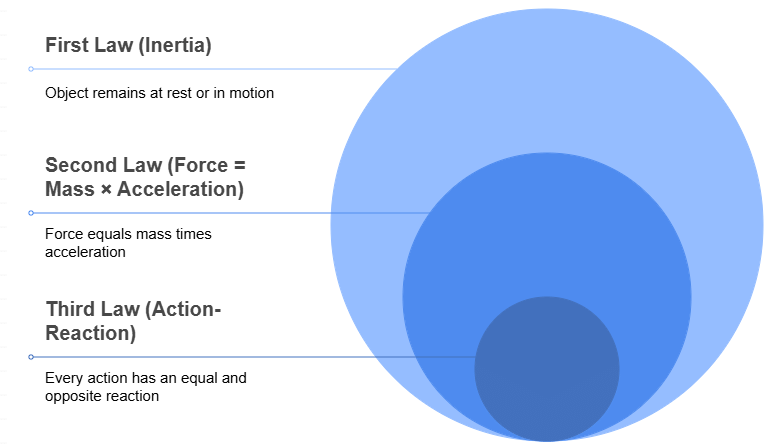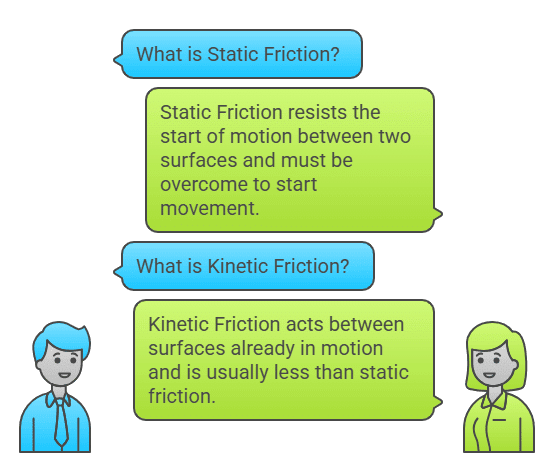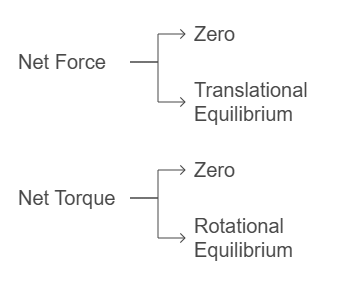Mnemonics: Laws of Motion | Physics Class 11 - NEET PDF Download
1. Newton’s Three Laws of Motion
Types: First Law (Inertia), Second Law (Force = Mass × Acceleration), Third Law (Action-Reaction)
Mnemonic: "Ice Floats Around"
Ice – First Law (Inertia)
Floats – Second Law (Force = Mass × Acceleration)
Around – Third Law (Action-Reaction)
First Law (Inertia): An object remains at rest or moves uniformly unless acted upon by an external force.
Second Law: The net force on an object is equal to the mass multiplied by its acceleration (F = ma).
Third Law: For every action, there is an equal and opposite reaction.

2. Types of Friction
Types: Static Friction, Kinetic Friction
Mnemonic: "Stop Kicking"
Stop – Static Friction
Kicking – Kinetic Friction
Static Friction resists the start of motion between two surfaces. It must be overcome to start movement.
Kinetic Friction acts between surfaces already in motion and is usually less than static friction.

3. Conditions for Equilibrium
Types: Net Force Zero, Net Torque Zero
Mnemonic: "No Tension"
No – Net Force is Zero
Tension – Net Torque is Zero
For an object to be in equilibrium:
The net force acting on it must be zero to prevent any linear acceleration (translational equilibrium).
The net torque must be zero to prevent any rotational acceleration (rotational equilibrium).
This ensures the object remains stationary or moves with constant velocity without rotating.

|
94 videos|367 docs|98 tests
|
FAQs on Mnemonics: Laws of Motion - Physics Class 11 - NEET
| 1. What are Newton's three laws of motion? |  |
| 2. How can I remember Newton's laws of motion for NEET? |  |
| 3. What is the significance of the second law of motion in daily life? |  |
| 4. How does Newton’s Third Law apply to sports? |  |
| 5. Can you explain inertia and its relation to the first law of motion? |  |





















